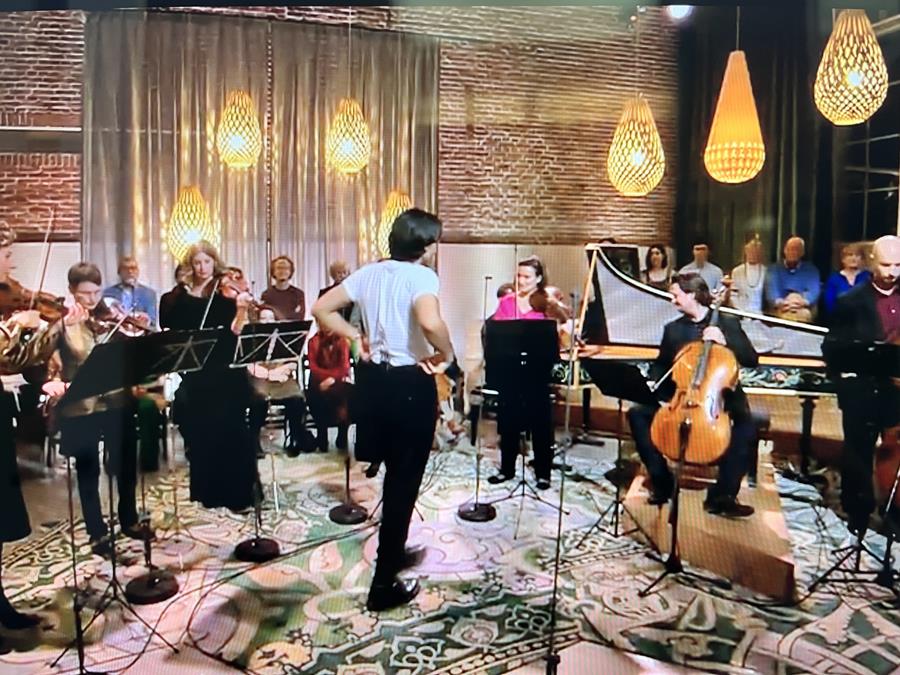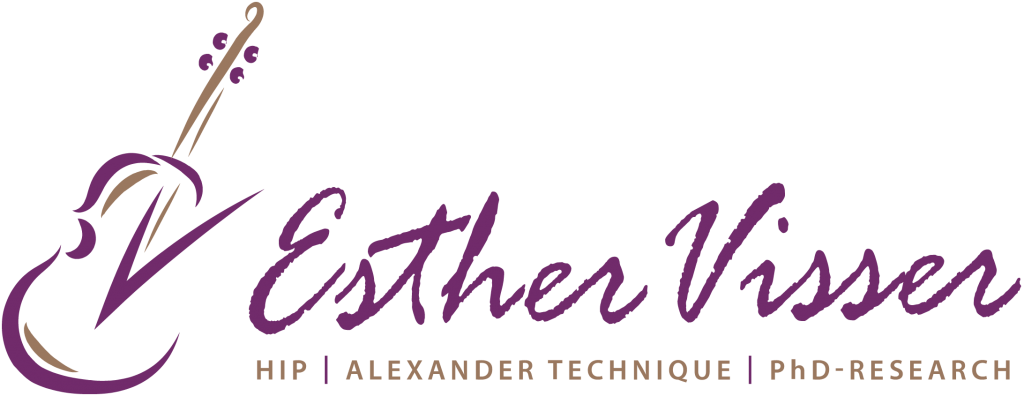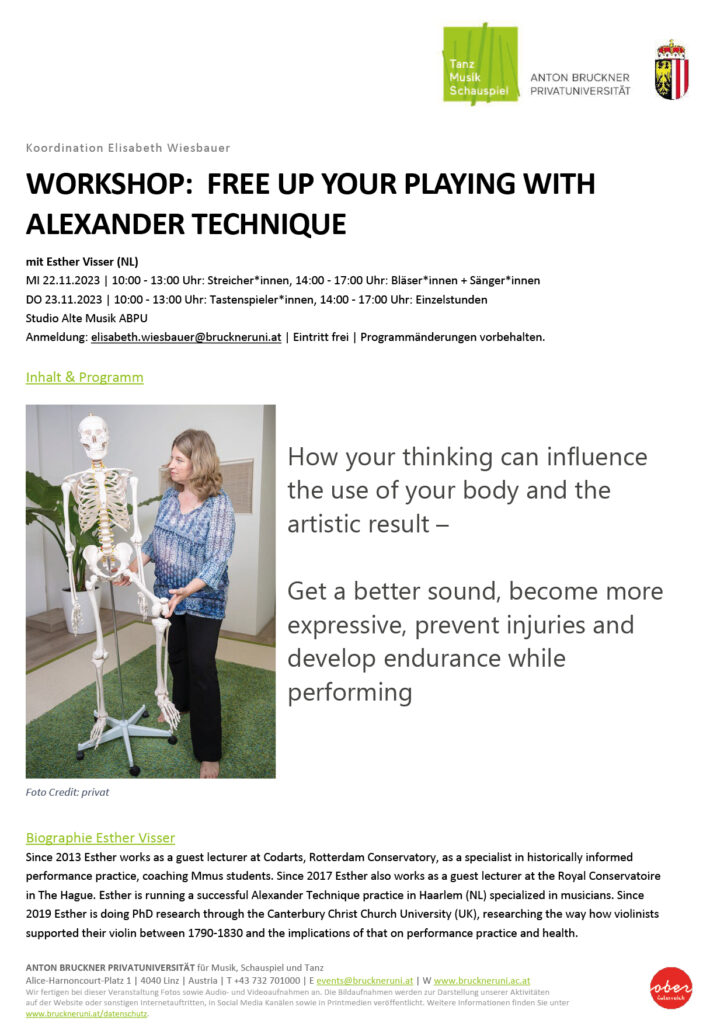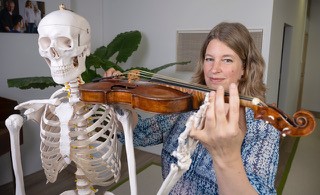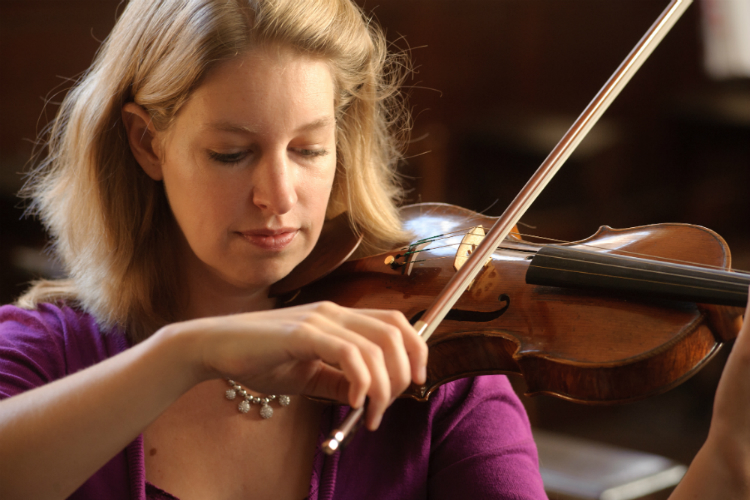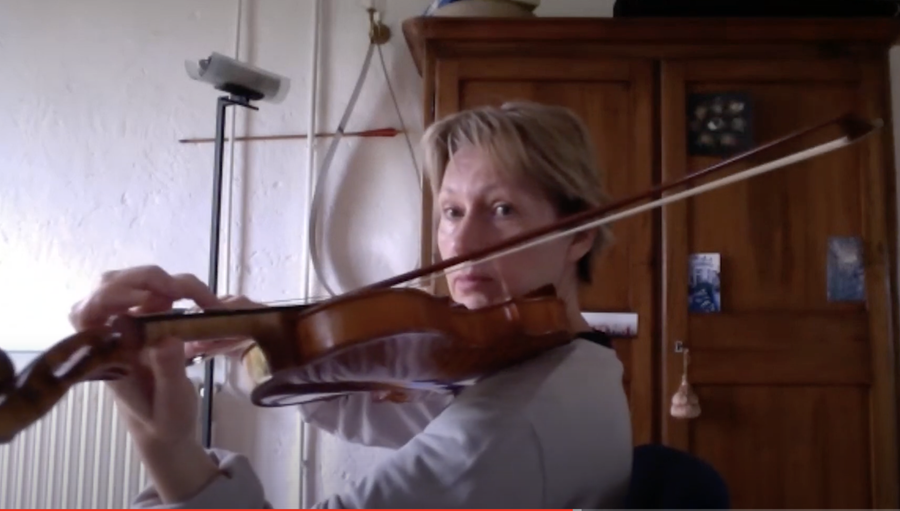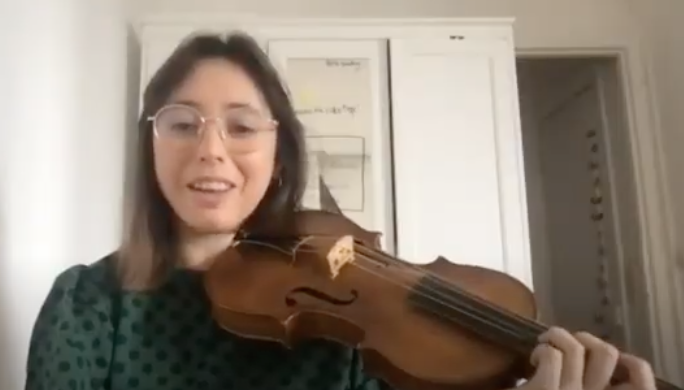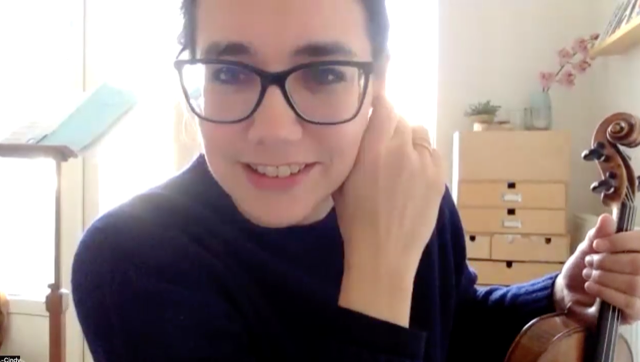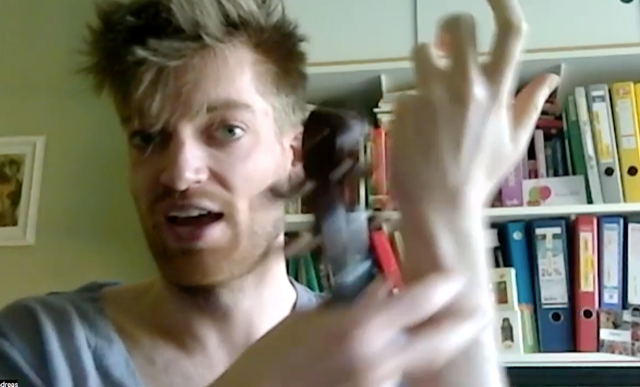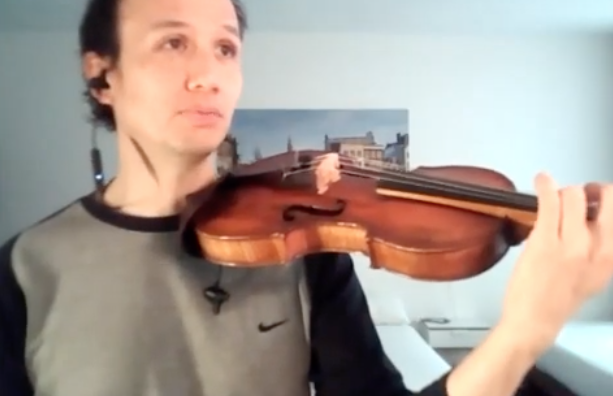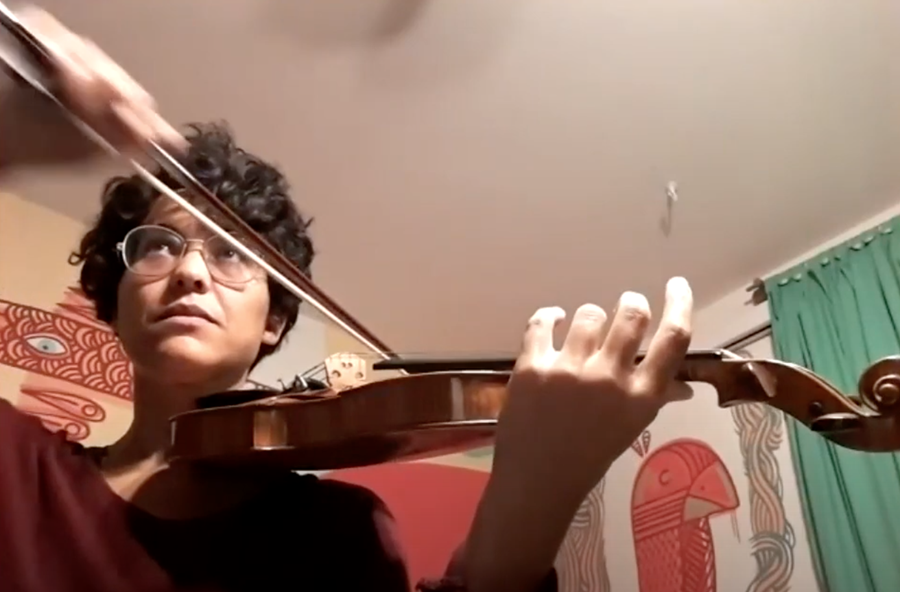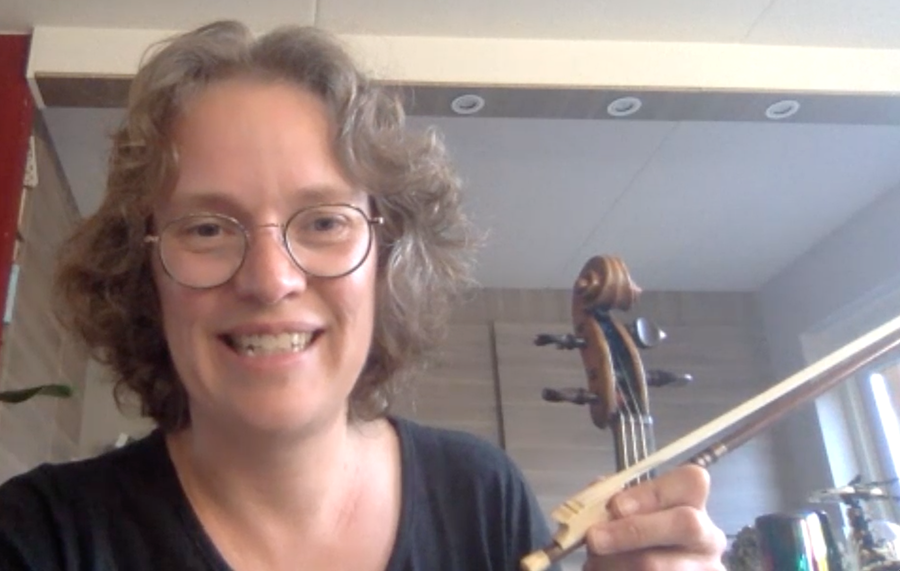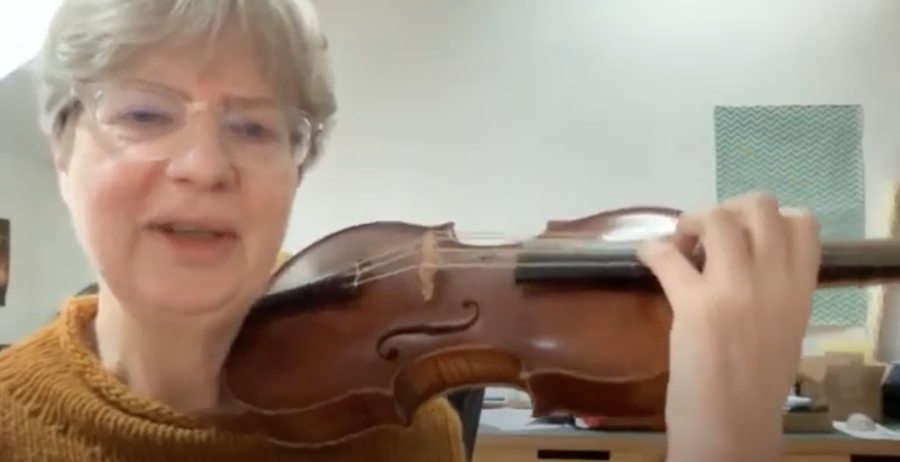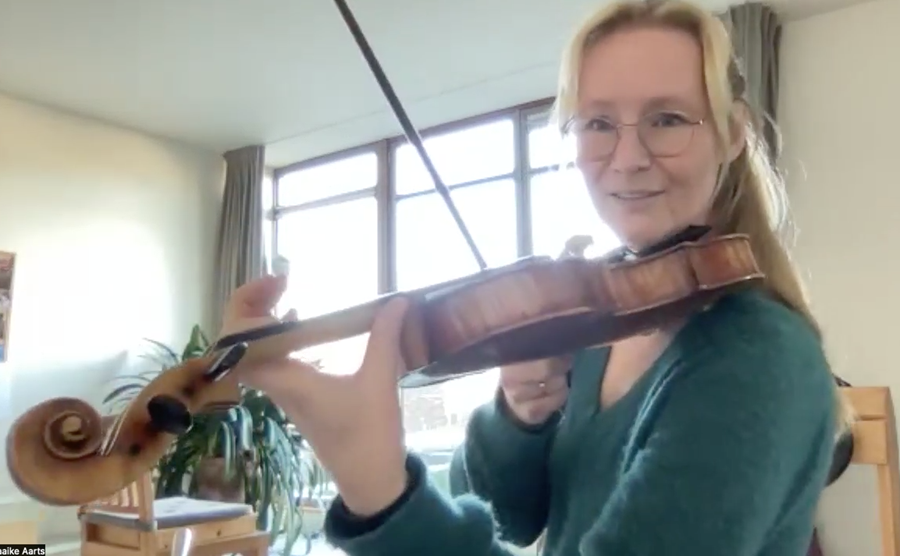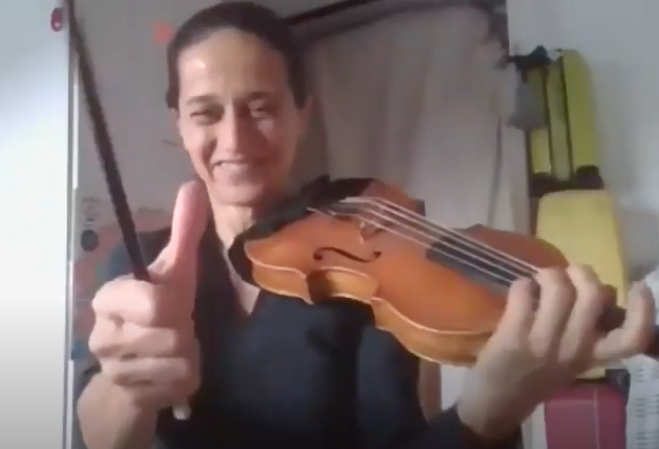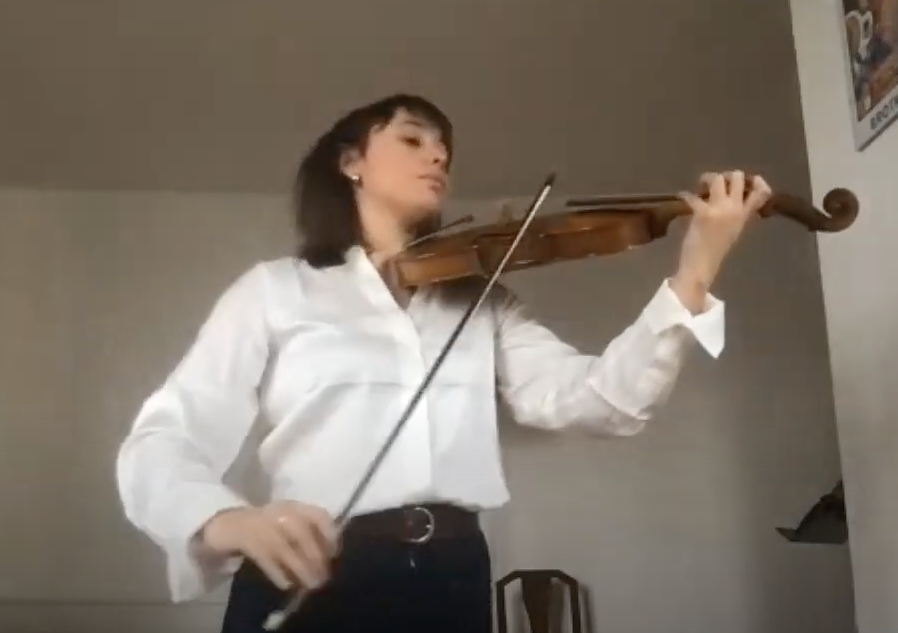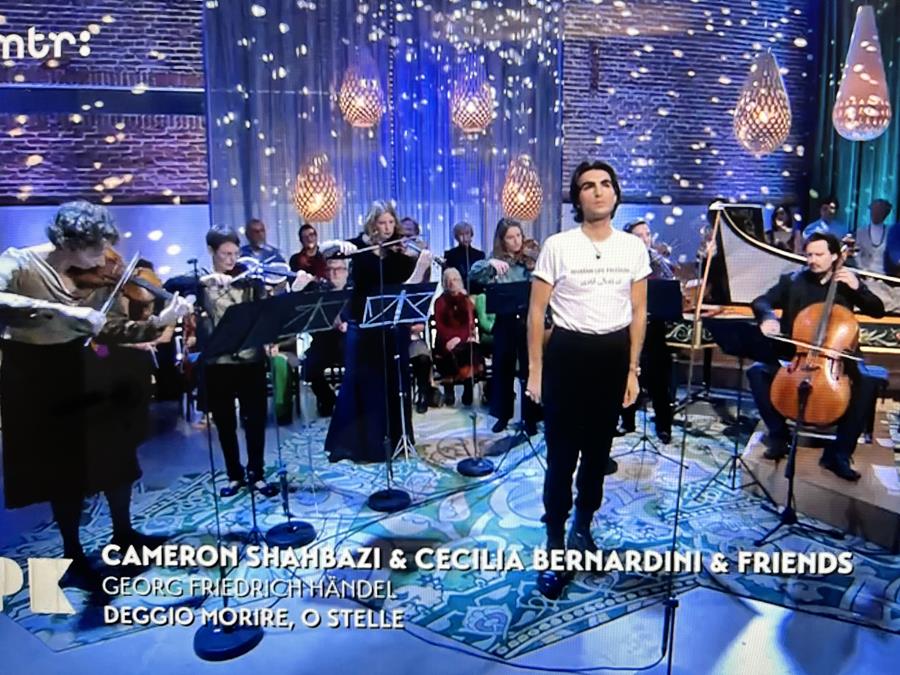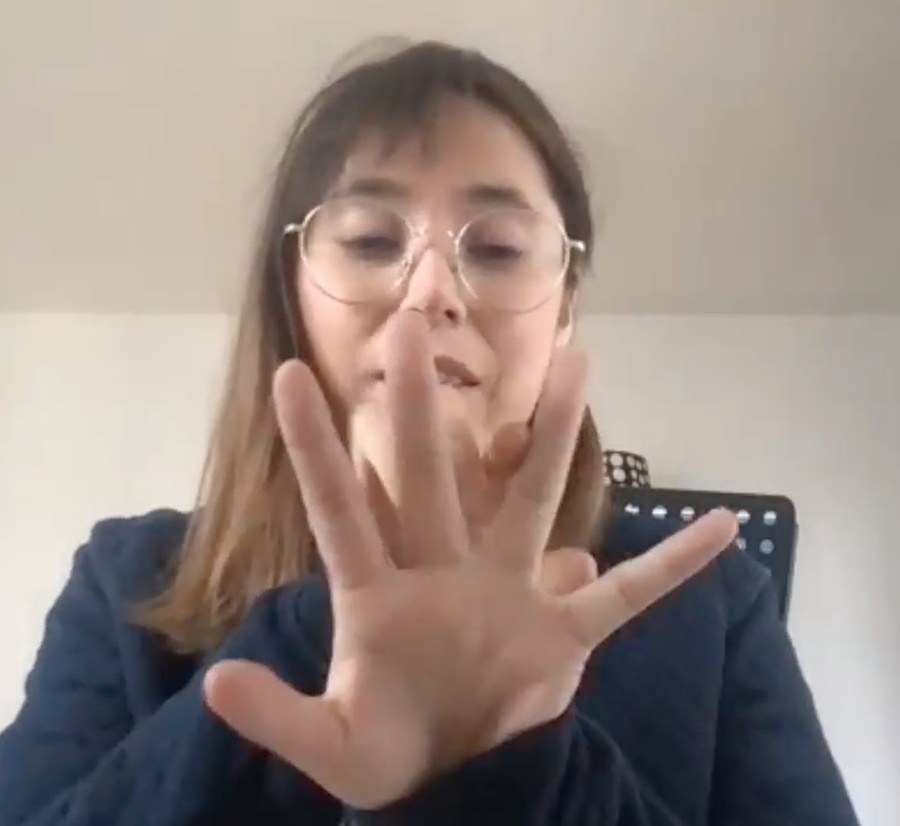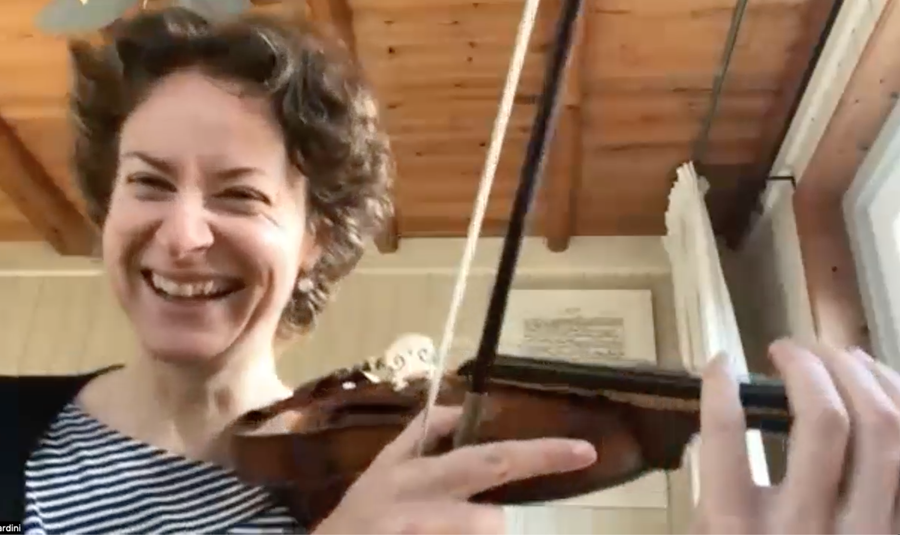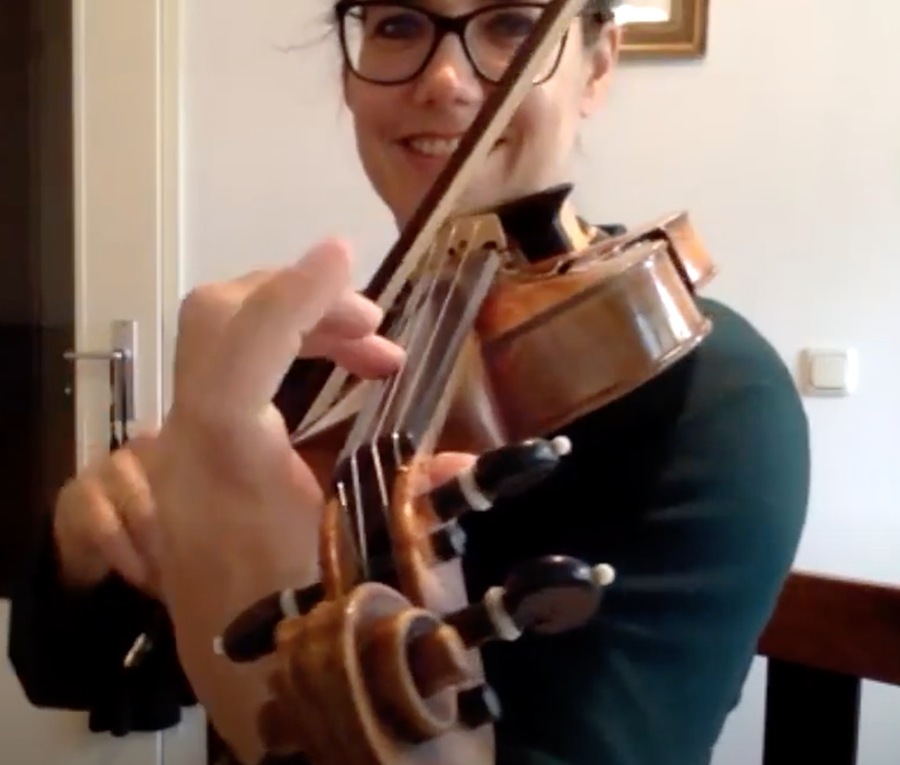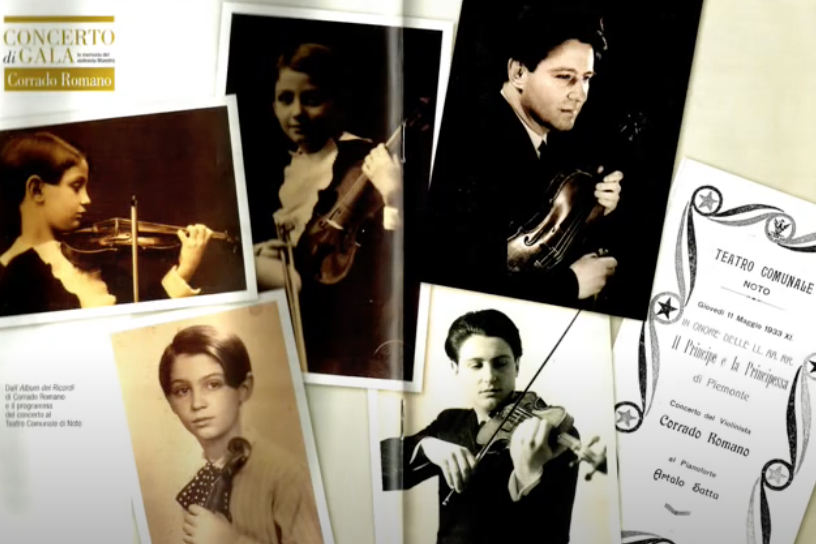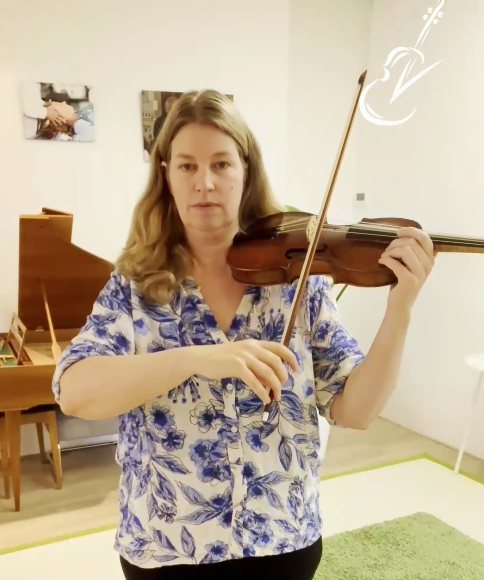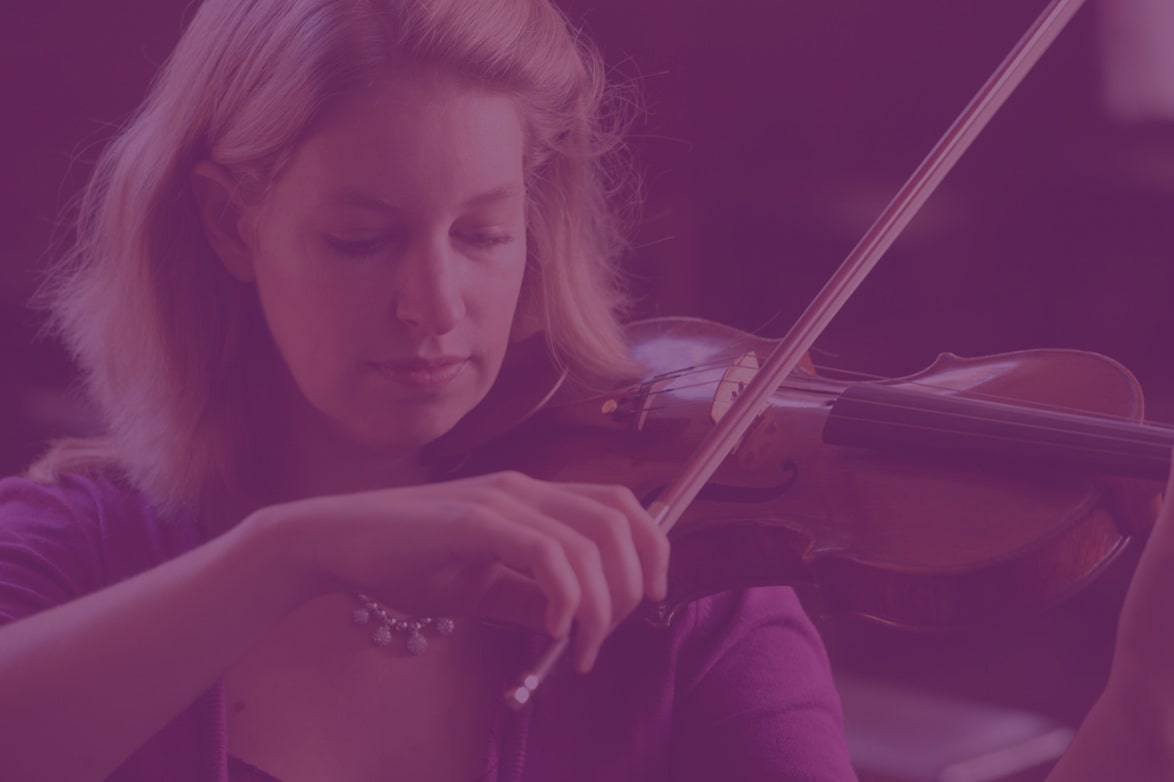
The 21st week of the experiment
Hi everyone,
This is the 21st week of the experiment on playing without a shoulder rest and / or chin rest. Here are some updates and some feedback.
Thank you for sending me your videos, it’s really important for my research. Some people just finished the whole 12 lesson program, sent their last video and filled out the exit survey. Fantastic, thank you so much! The majority however is still about 2/3 in the program and that is perfectly fine, please do take all time you need and don’t hurry.
It is still possible to start taking part in the experiment. Many people already filled out the entrance survey. Thanks. If you didn’t do it yet, please do so before you start the lessons.
If you know more people who like to join, for example starting this or next month, this is still possible through my website. If you missed the newsletter last week, you can still read it here. There is a collection of past newsletters at my website available too.
Please be welcome to join the Zoom session next Wednesday 11.00 AM (Dutch time) if you want… Just to meet or to ask some questions. Would be nice to meet up. You can watch Zoom sessions back on the login page where the video lessons are, as well.
“I think your research is very important and I think you are very right on all the points you raised. I am so thankful that your talk about this, because almost every musician has unhelpful habits.”
– Jun Keller, Vienna Philharmonic Orchestra,
participant in the experiment
21st Zoom session
Last Wednesday we did a 21st zoom session with two participants of this experiment, Maaike and Cecilia. If you want to watch it: I recorded the session and there is a link to it in the login page under the video lessons.
Maaike Aarts from The Netherlands joined first and I asked her how she liked her new strings, as she ordered gut strings with Corde Drago in Italy after my suggestion here in the newsletter. She said she is happy with them, but she struggled with making a good knot at her tailpiece, as this is the first time she is using gut strings. So this session started by showing me how to make a good sliding knot in the string, so that the string will be pulled downwards from beneath the tailpiece. If you like to see how to do that, please watch the zoom session, I explain it to Maaike step by step.
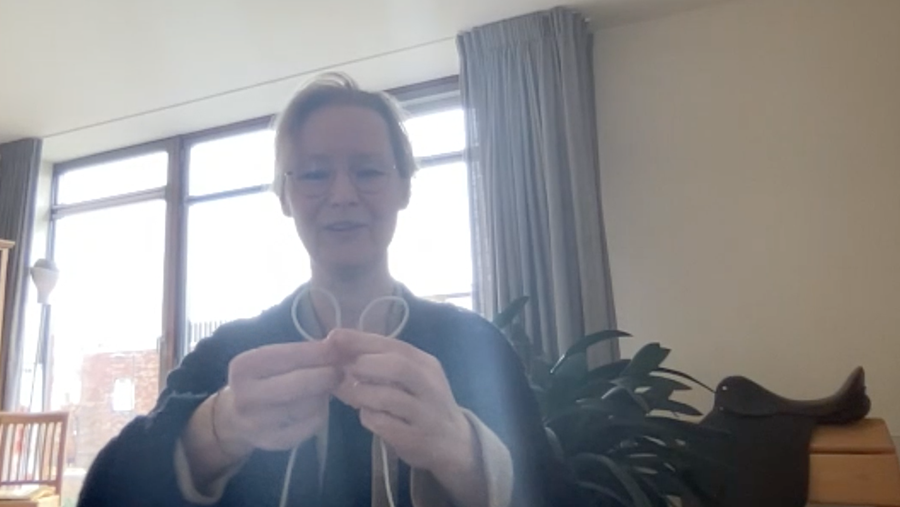

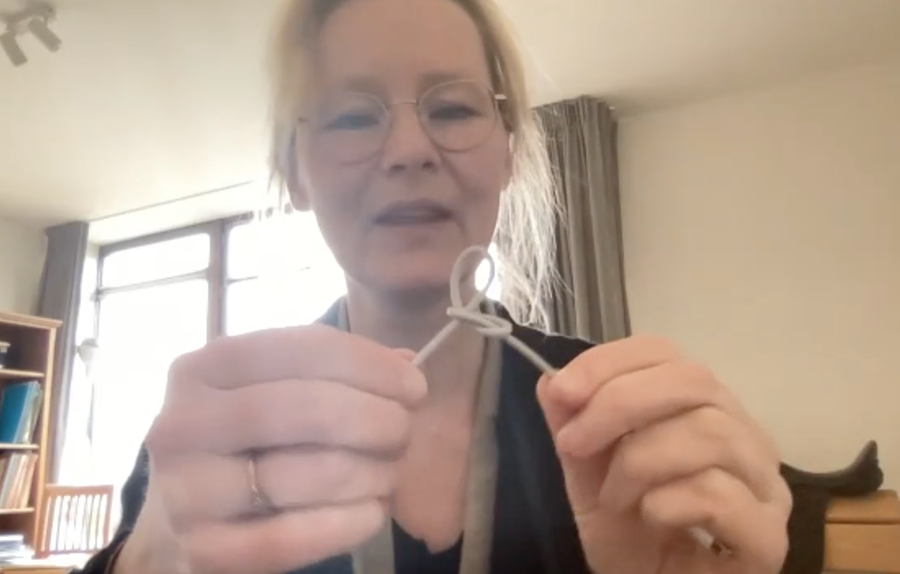
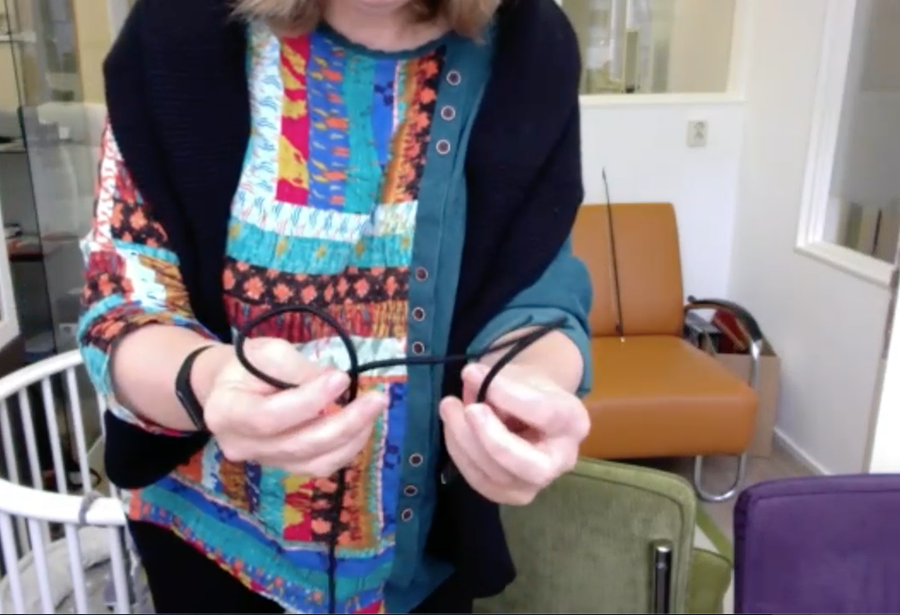
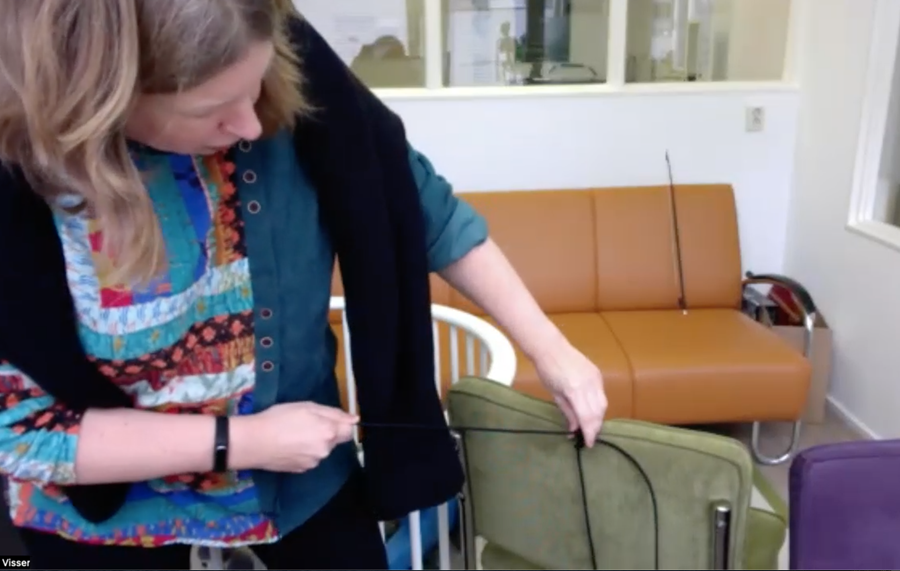
We talked about the different features of the gut strings, how to adjust your bowing and use a slower bow when you want to play forte. In my opinion we can use much more weight of the arm in the strings than with modern strings. Maaike told me that she already played a Bach performance with her new strings and sometimes the violin was squeeking a bit in soft passages, so maybe she took too much weight out of the strings. Gut strings also are more sensitive when your bow goes out of direction. Maaike also told that the ‘wolf tones’, especially on the C and C sharp, became more difficult. That is my experience as well: The gut strings will enlarge the features of the instrument, so the wolves become worse, but the nicer features also become even nicer. Most of the very good instruments have wolf tones, I think there is not much we can do about it.
We also agreed that it is important take enough time to tune, even in between movements, but that the tuning itself can be done very quickly.
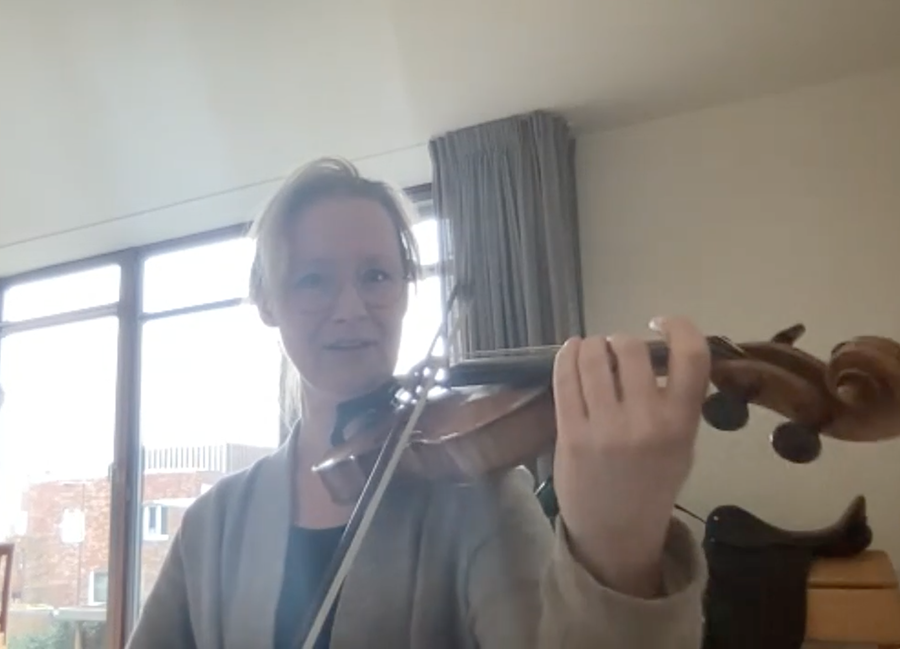
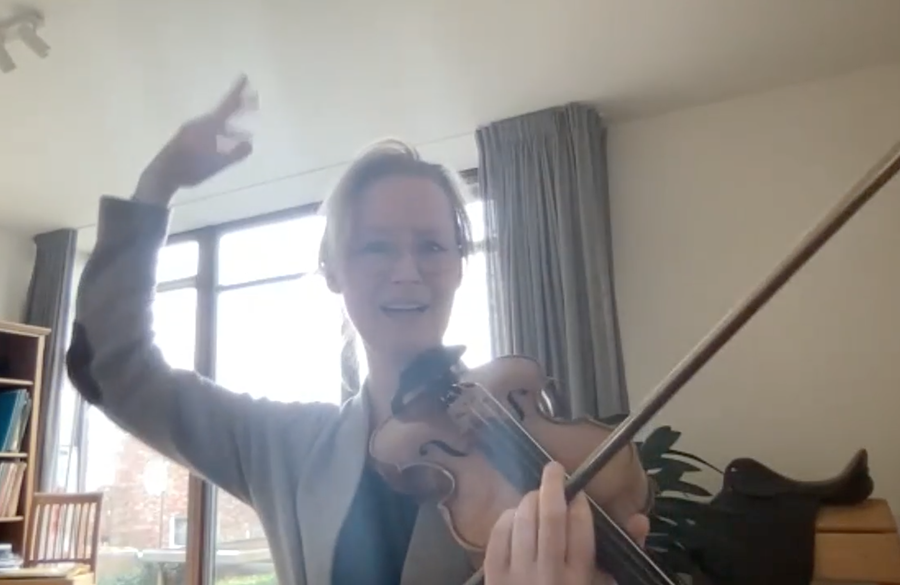
Then we spoke about making shifts, as Maaike still sometimes is dropping the violin while sliding back. I see that happening with more participants in the experiment. Of course the can release the arm muscles for a moment, but I think the dropping movement of the violin is a bit disturbing and if your balancing of the violin was OK, you don’t need to release those muscles. What happens, is that we lose the support of the thumb in the way down. So we need to practice that our awareness stays ‘with the thumb’, which is really something most violinist are not used anymore (since the use of the shoulder rest). This worked well for Maaike, but of course she needs to practice that and get used to it, it was very new.
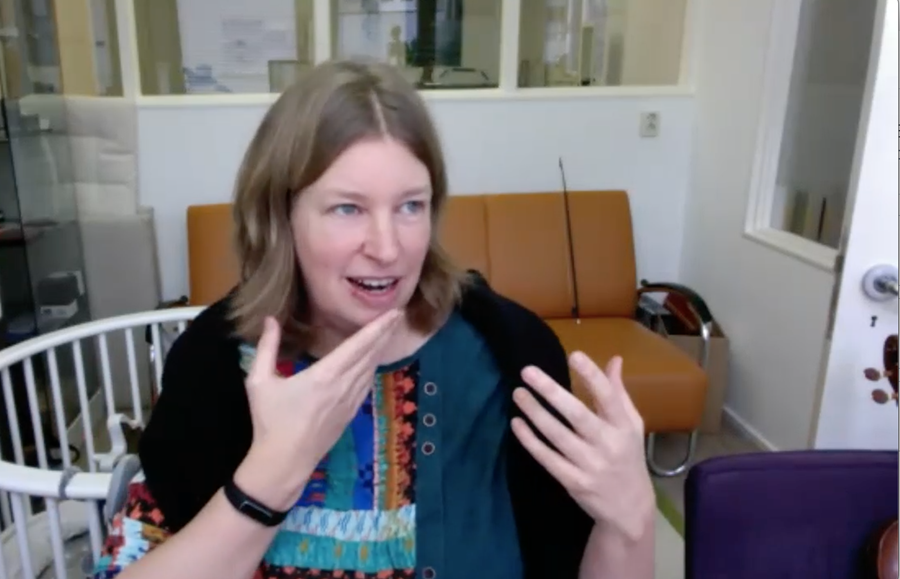
My goal with the people who do the experiment using chin rest but no shoulder rest, is that the keep touching the chin rest with their head, but that there is absolutely no function anymore for the head to keep the violin up. The only function for the chin rest is to prevent the violin from leaving the body when shifting backwards (slipping to the left). The thumb is responsible for keeping the violin supported.
Maaike also had a question about the vibrato, because somehow in her case the violin keeps shaking a bit and she can not really do a slow vibrato. When I saw her showing it, I noticed that she used her hand a bit in the way how one would do it while shaking the hand in the air. But in my opinion the difference when balancing the violin is, that the thumb can not move place, as he is supporting the instrument. This is a stable point and the hand is moving around it. In Maaikes case, her thumb was moving with the hand and that caused the shaking of the violin.
The hand is pivoting around the finger that plays and the thumb. That s why I designed the exercise with a paper between the string and the finger, to feel that a very big movement is possible by the hand itself, on top of the lower arm. When you really understand that movement, you can choose any tempo you like without having the violin shake.
We agreed that is all has to do with awareness of the thumb. The ideal should be that we are equally aware what the thumb is doing compared with the 4 other fingers at the left hand…

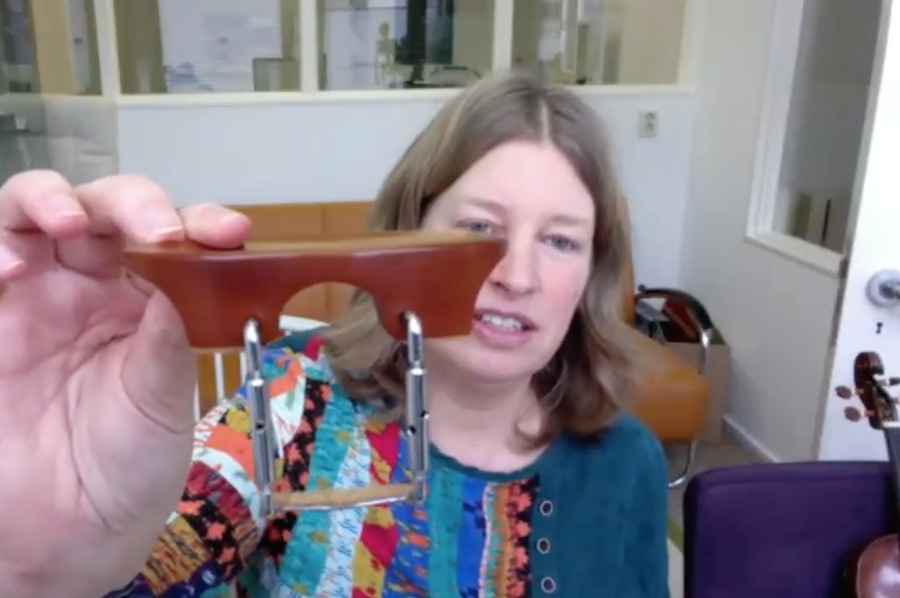
Then Cindy Albracht from The Netherlands joined our conversation and shared with us that her teacher in Vienna, Gerhard Schulz from the Alban Berg Quartet, always told her to have an ‘up’ feeling in the fingers while playing. So not to keep them always on the string, and also while playing the finger. He said it has an amazing influence on the tone and the vibrato. So Cindy thinks that there is a ‘thinking in activity’ in the fingers that can help the vibrato a lot. Very interesting! James also added that this thought of ‘up’ can help to release tension in the fingers.
We spoke about different chin rests, I am using a flat Flesch model for Romantic repertoire. I also showed the copy from the original Louis Spohr chin rest, made for me by Dmitry Badiarov in The Hague. It was attached in the hole in the violin itself, and placed in the middle.
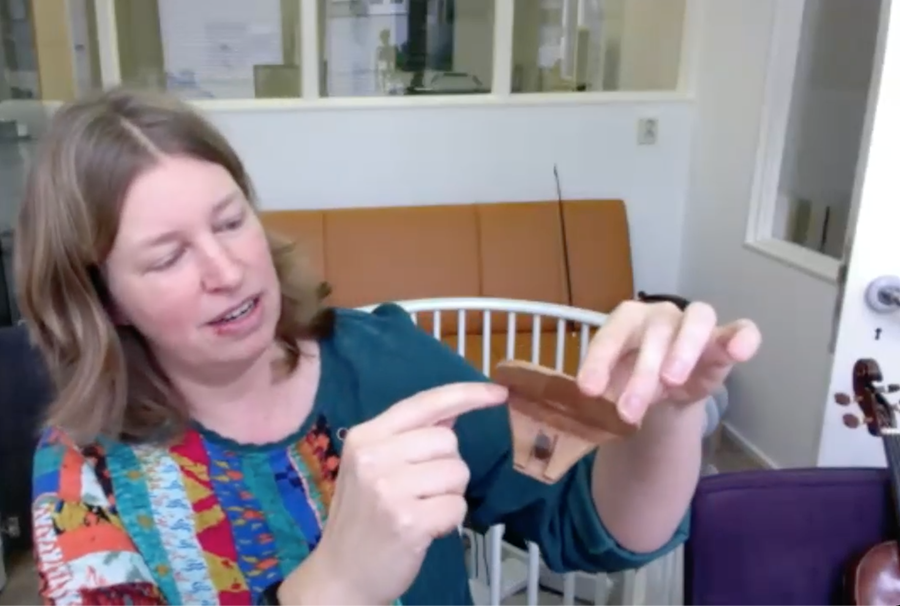
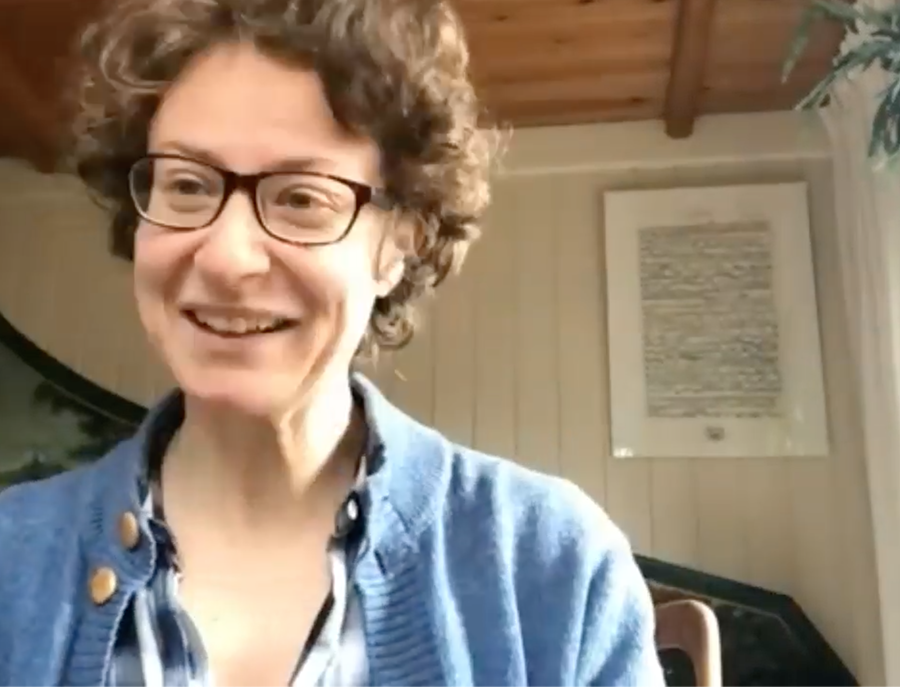
Then Cecilia Bernardini joined the zoom session and shared with Maaike and me that she still feels some tension in her thumb while supporting the violin. Doing the experiment, she is becoming hyper aware of the thumb, which is good, but she also starts feeling more things that perhaps were not helpful in her ‘old’ way of playing. I observed that while telling this to us and showing it in the air, already her hand was showing a lot of muscle tone. So I suggested that we could practice ‘air violin’ and having soft hands while doing that. Maaike also shared that she had that same feeling when she was starting the Alexander teacher training and when the teacher was touching her arm and directing the elbow down for example, her hand would soften a lot without really understanding it by words. So to have a live meeting with an Alexander teacher also is a very good idea. Cecilia and me agreed that she will visit me next week in Haarlem, so I can help her with this in person.
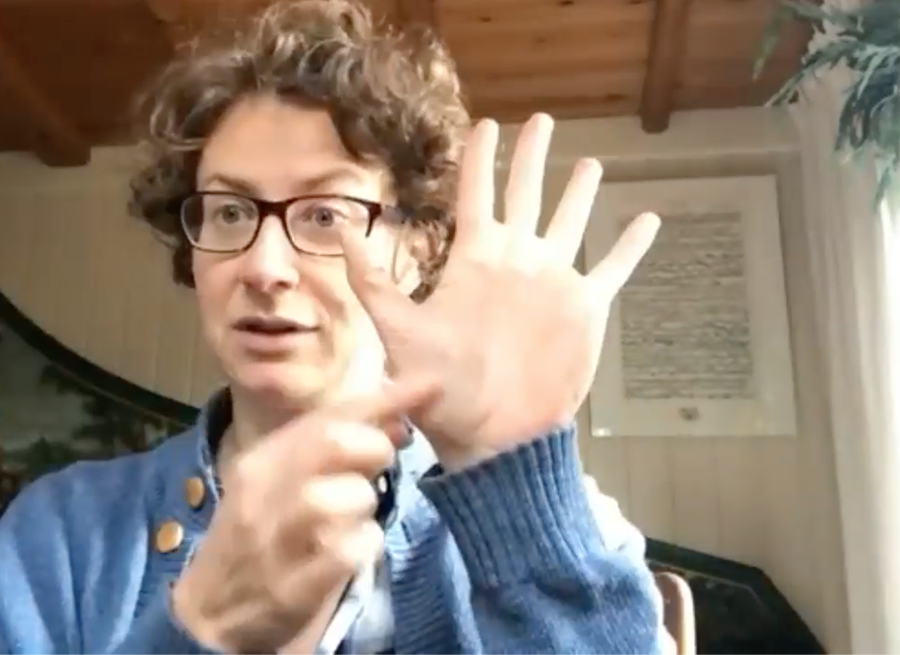

For the use of the hands, it’s very important that the use of the back is healthy and stable, so that the arms can come out of the back in a supported way, a bit like wings. So it’s a bit dangerous to speak a lot about the use of the hands, while ignoring the use of the back.

As you can see, when Cecilia supports the violin with her thumb and wants to have an open ‘C’ shape at the indexfinger side of her hand, she feels like she needs to bring her wrist outwards to be able to do that. This is creating tension. So her question was: “How to have this open hand without creating tension by bringing the elbow too much in and stretching the wrist?’
First I asked her to keep her hand next to her violin in a kind of playing position and see if she could find a comfortable position with an open C shape and a soft feeling in the hand, in alignment with the arm.
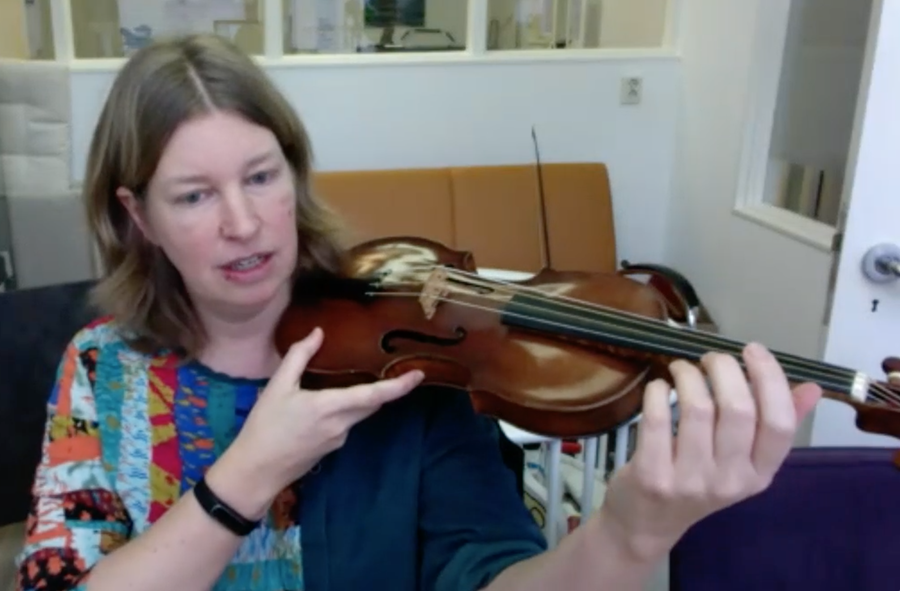

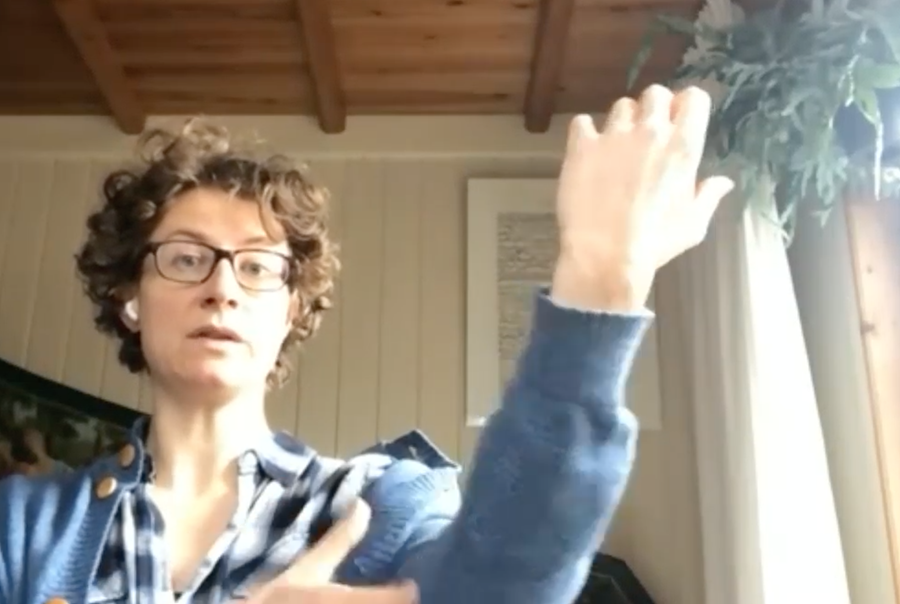
As you can see, even without touching the violin, Cecilia feels a lot of tension in her upper arm and shoulder, just by bringing the arm in playing position in the air. It feels like is turned in too much. Cecilia started to wonder if it’s something in her anatomy that is causing that.
Maaike and me both could reassure her that it is not her anatomy that is causing this. Many violinists are having this problem. It’s so important to think about your back (lengthening and widening) while bringing up the arm towards the violin. When people can do that, it is much easier to release. When you only think about your arm when bringing the arm up, you already have much more tension. So it’s a matter of coordinating the whole body and it starts wit the way you stand or sit, and how you use your back, and then you can take your violin.
It’s a kind of prerequisite, to first be able to use your back in a healthy way.
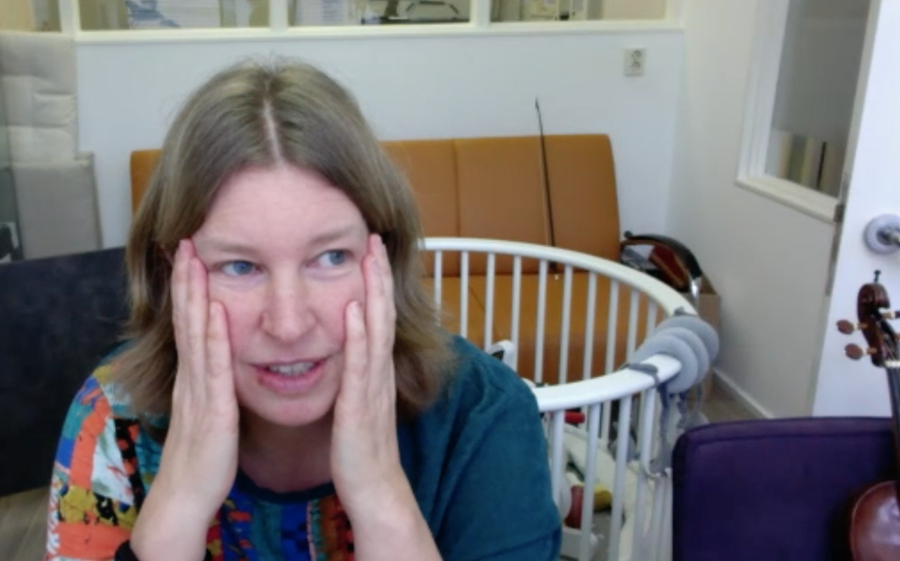
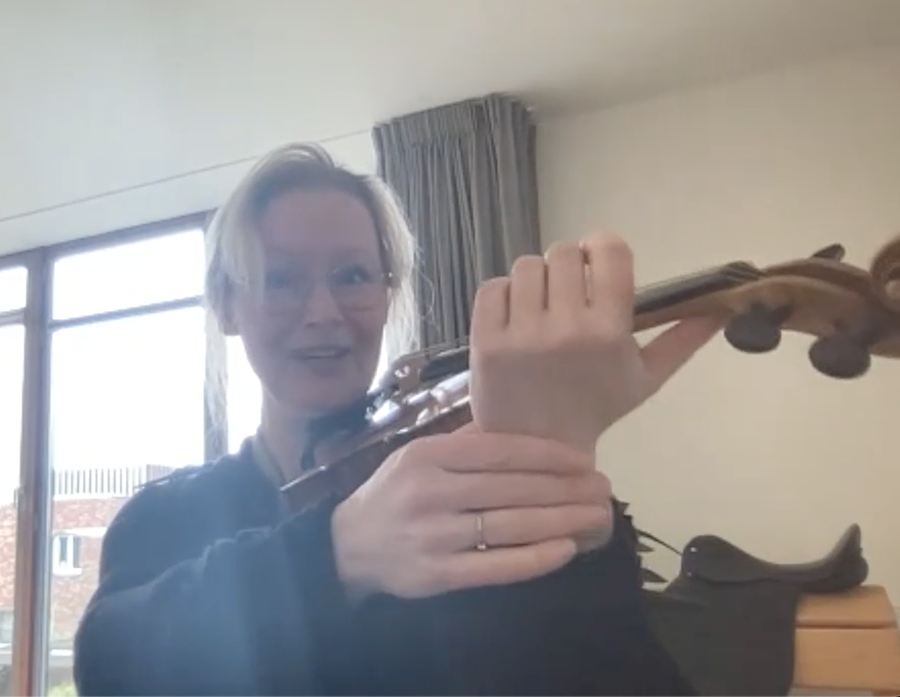
Maaike also shared a nice suggestion: To find yourself a little shelf or something (in Dutch ‘randje’), to rest your left elbow on. For example a piano. And then you start practicing the release from the elbow downwards and the hand going upwards, softening, having an open C shape, softening the wrist. Then you go back to your back and take your arm out of the shelf, and keep thinking about your back carrying your arm, while your arm is again supporting the violin. But these are tricks that in act only are possible if you had had some Alexander Technique lessons to understand what we exactly mean, by for example ‘going back to your back’. That is why Maaike absolutely recommended Cecilia to come for some lessons with me in Haarlem to have some foundation for this.
Cecilia felt a bit like on a crossroad, because she already feels more free in her neck and shoulder area by our experiment, but if this new way of supporting id causing tension in her hand she doubts if you should go there, of course. However, I told her that I think in fact it is quite easy to solve if she would come one or two times to Haarlem and we could work on this foundation in her back. So that is what we agreed on and Cecilia is coming next Friday to my practice. I think this is a much quicker way than speaking about it on zoom, because by touch things can be much clearer communicated and we have the luxury that she lives not far away.
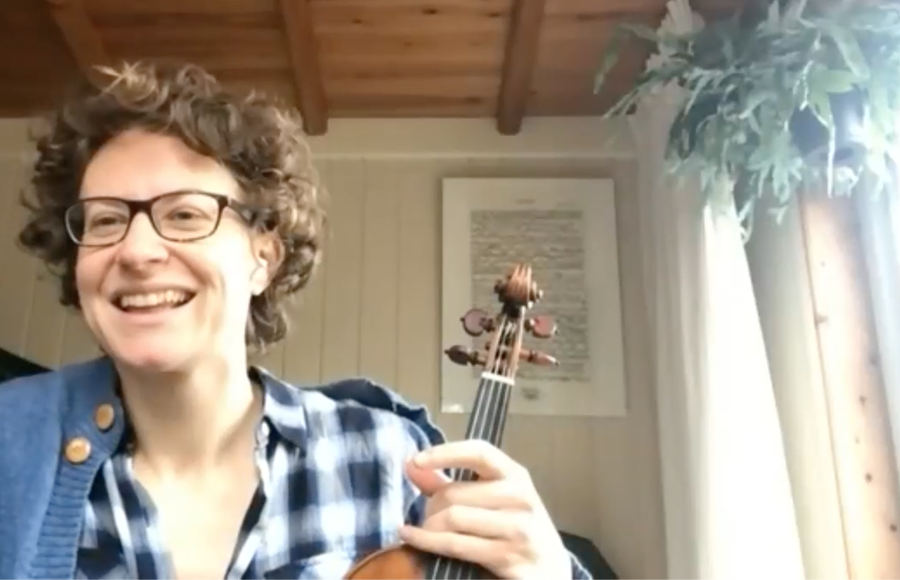
Maaike also explained that it is quite logical that when the neck and shoulder area of people in this experiment start to free up, that the left arm somehow has to work harder. If the left arm did not yet develop the right means how to do that, it can feel like there is more tension there. So there is no reason to panic.
Cecilia agreed with that and shared that it also is a bit frustrating, because she totally believes that it is possible, as she sees me doing it and it looks completely natural. But when she tries to copy that, it’s not the same thing. I totally understand that and I think it looks deceivable simple, as there is a lot of training behind it.
Cecilia needs to record the Chaconne this week and before, she could get through it quite easy, but now it seems harder. Of course that is logical, as this new way of balancing is not accustomed in her system yet. I told her that I think that task is a bit too hard in this stage of the experiment for her and I recommend her to do it in her ‘old’ way. But of course it’s also hard to forget about everything and it then feels like a step back, as some parts are already in her system and she feels how deliberating it is. I really stressed that for example wanting to do all the shifts in the Chaconne in our new way, is too much to wish for. She is only at the half of the experiment, it’s too early. I estimate that in half a year she will totally be able to do it, after finishing all lessons in this experiment.

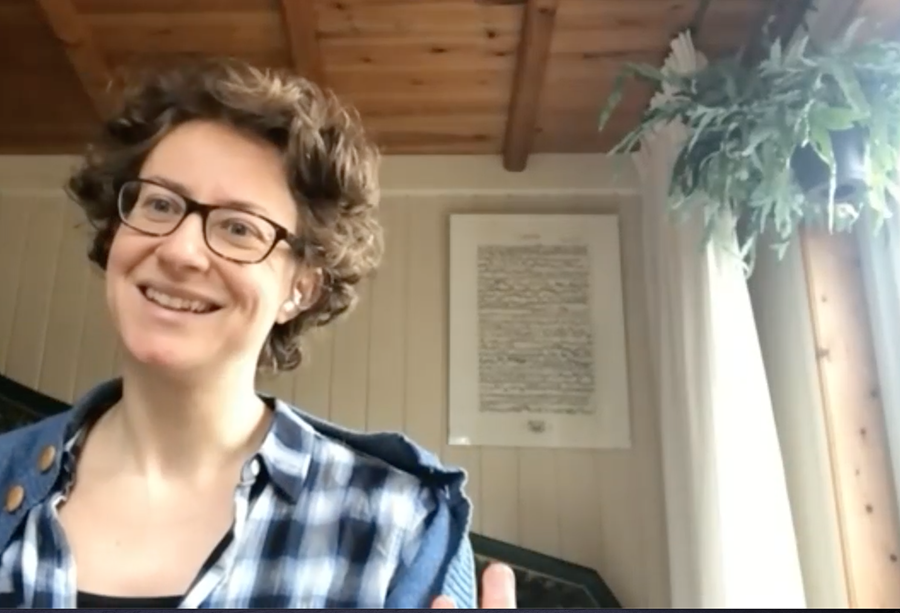
I also see it in my swimming school. Sometimes I train almost professional swimmers and especially because they have trained so much before (like Cecilia did on her violin), it takes a lot of effort to change those habits. Much more effort than for people who trained less. It’s simple but NOT easy.
We also spoke about it a bit more, that the wrist needs to release sideways, to be able to have the hand widening and opening. The wrist can fall to the left and towards your nose. Please check the zoom recording if you want to see that. We decided that it’s not a disaster if the side of the index finger is touching the violin a bit. The opening of the hand should be the result of the softening the hand, and not the opposite, that the opening of the hand is the goal. So please first accept it if it is touching the neck of the violin. For some people it’s also OK to touch the neck of the violin a bit when they play on the lower strings, for example. In my opinion, the most important thing is that you don’t squeeze and don’t support the violin with that part of the hand.
It does not really have to do with the size of the hands. Some people have big hands but use them in a narrowed way and some other people have small hands but very open and soft. Maaike and me think that for Cecilia it will absolutely be able to play with mainly an open space between the hand and the neck, but this should not be a goal in itself. It’s more important that you feel comfortable. So more from the inside out and not focussed too much on how it looks.
I am also planning to record 6 more videos for all participants in this experiment, focussed purely on Alexander Technique, as an extra. For example about laying down on the ground with books under the head (semi-supine), this can give a lot of release and will support everyone’s process.
So I am very much forward to meet Cecilia this Friday and thanks to Cecilia and Maaike for the nice zoom meeting!
Please take your time
It is important that everyone in this experiment enjoys the curiosity we have, and take part in a joyful and playful way. In that way, we learn the best. Don’t try too much to ‘do it right’…and don’t hurry. If you need more time, just let me know, keep me informed, and we take a bit longer. No problem!
Best regards, please let me know if you have questions,
Esther Visser
